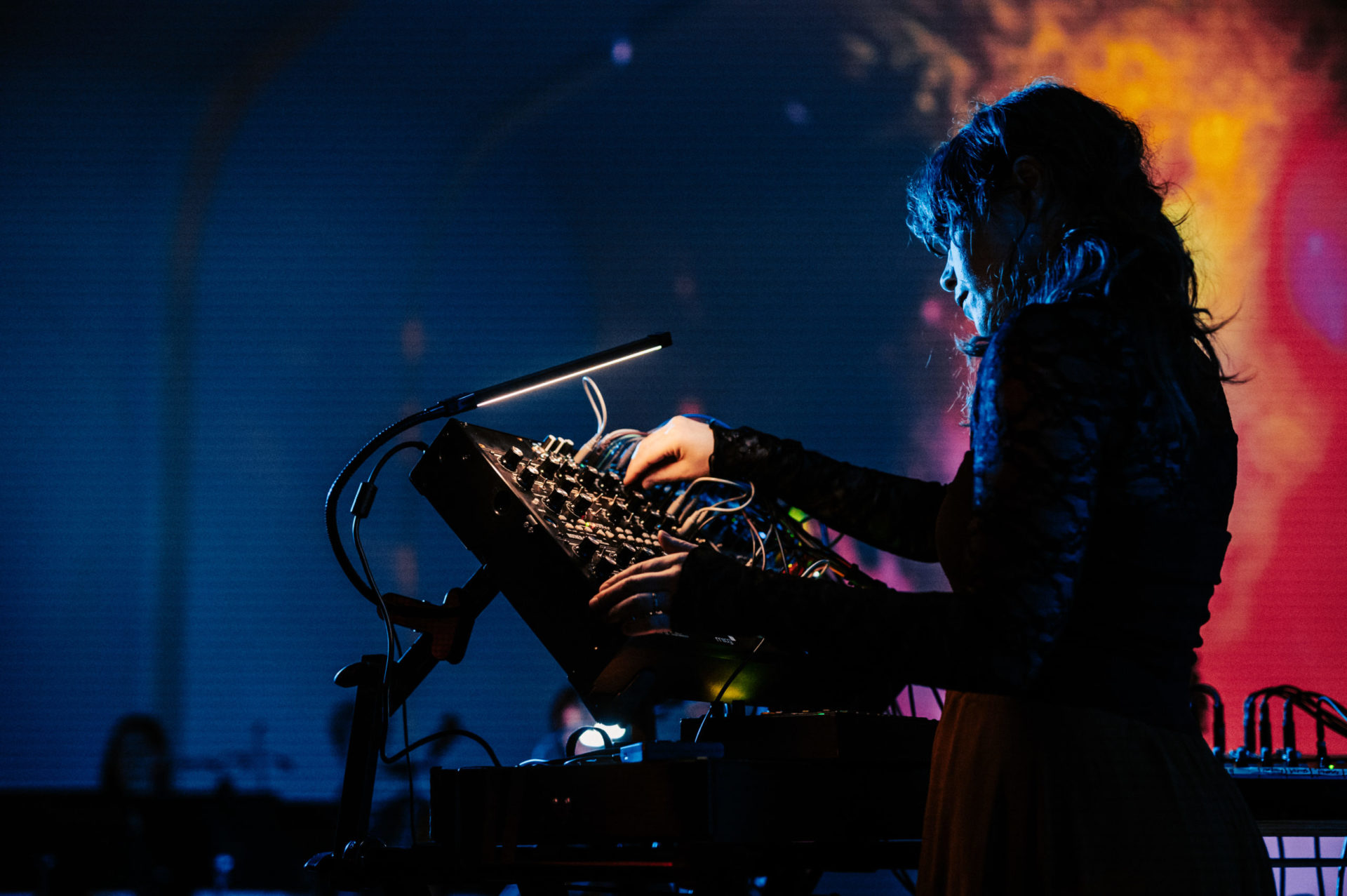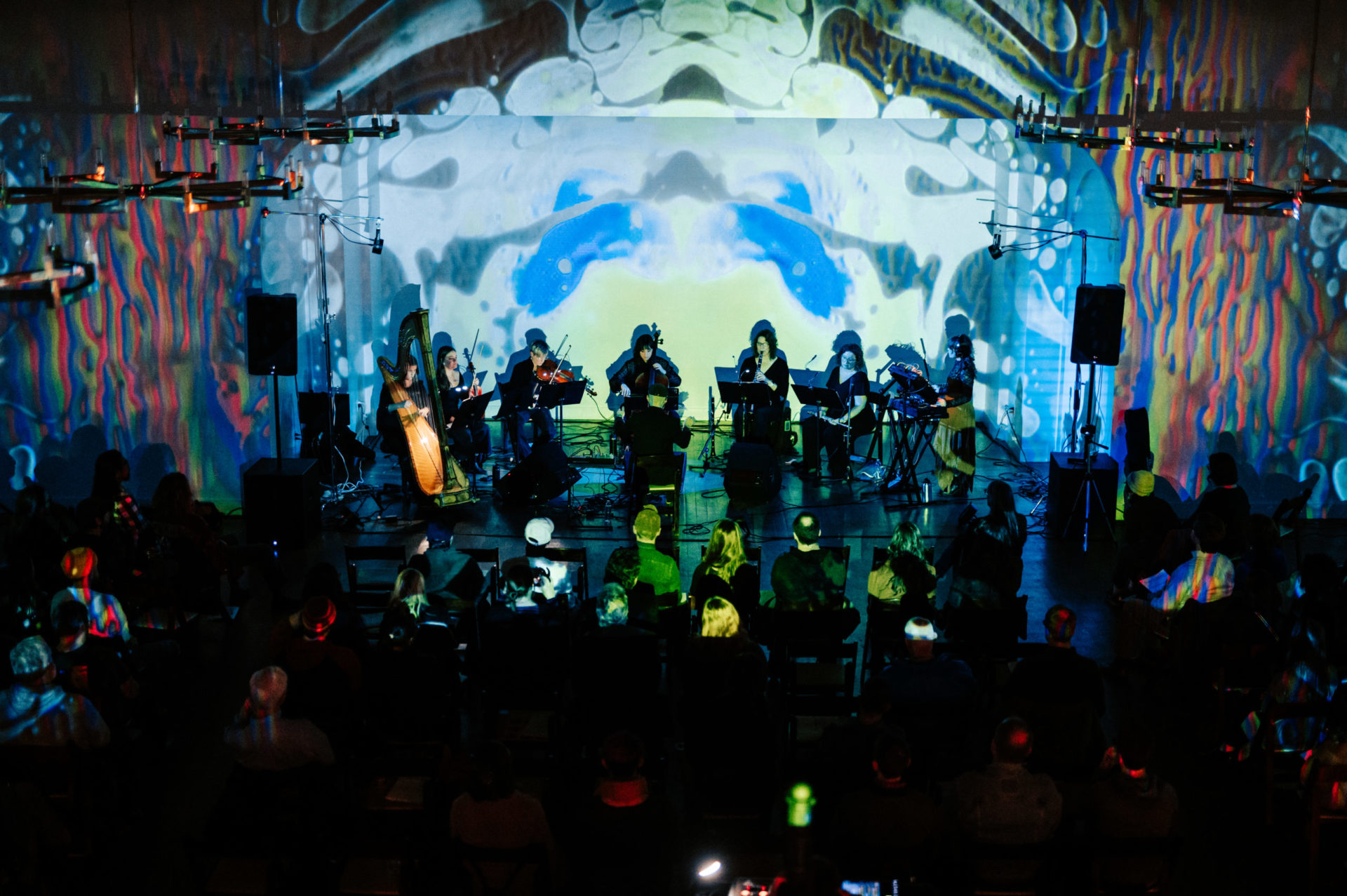A Tenth Season from Chatterbird begins!
The Blossoming at Emerson Hall
On Thursday, November 30th, at Emerson Hall, Nashville’s experimental chamber ensemble Chatterbird inaugurated it’s tenth season with a concert titled The Blossoming, featuring Dream Chambers. My first exposure to this wonderfully innovative ensemble was their 2016 performance of Halldór Smárason’s 1972, Game 13, a piece written for amplified chess board, electronics, and video which re-enacted the “Match of the Century” between Chess Master Bobby Fischer and his Soviet Counterpart Boris Spassky. It was experimentally weird, entertaining, and cool. Since then, and as demonstrated by The Blossoming, Chatterbird has not changed much, they are still cool, entertaining and experimentally weird, but I would dare say they’ve improved their game.

The concert at Emerson Hall was made up of a series of seven pieces that Dream Chambers, an electronic artist from New Zealand (transplanted to Nashville for the last four years), had written during the pandemic while she was immersed in our ambient and electronic scene. These pieces, seemingly autonomous on synthesizers, were then given an added orchestration by Sonya Waters, also from New Zealand, for a kind of expanded Pierrot Ensemble of clarinet, harp, viola, cello, flute and violin. The result was fascinating.
As an electronic expression, Chamber’s music, which she describes as “…analog oscillators waver[ing] through clouds of granularized vocal melodies revealing a somatic experience of expanding patterns of dissonance and harmony” is remarkable. However, Water’s rich acoustic interpretation of Chamber’s highly processed sound created a stunningly organic translation of Chamber’s intimate and breathtaking work. By this I mean, not to be too much of a Luddite, it felt like the reverse of modern life.

For example, increasingly in this modern life, technology, in the form of the smartphone, smartwatch, smartglasses, etc, has found its place between us and our day to day experiences with the world. These technologies are important, but, as Arthur Schlesinger once said: “Science and technology revolutionize our lives, but memory, tradition, and myth frame our response.” Waters added the traditions and memories of classical orchestration to Chamber’s emotional expressions—creating a fascinating dialogue between acoustic tradition and electronic innovation within the works themselves. As such, Emily Bowland’s pastoral clarinet, Sarah Crocker’s delicate harp arpeggiations and the melodic line on Kaitlyn Raitz’s cello all worked together to contextualize Chambers music within the long span of Western Music’s aural history.
And as if that wasn’t enough, the stunning projections by Flooded Sun Liquid Light Show on the blanched walls of Emerson Hall brought another layer of experience to the performance. A more highly developed version of a light show than Bill Ham might have given at the Avalon Ballroom in the Psychedelic Sixties, the show channeled the ideals of the hippy experience—an expanding consciousness and a presence in the moment, within a broader and grounded understanding of the idea that these visual effects can provide visual and emotional clarity (instead of distracting from it). While driving home from this remarkable concert and enjoying the wonderous view of Music City from the neighborhoods to the East, I couldn’t help but thinking what a wonderful concert—here’s to another ten years Chatterbird!



